Wipe disinfection of small and medium-sized surfaces — the correct technique and its verification
How to train the correct wiping technique for surface disinfection and make disinfection gaps visible? This film answers... read more
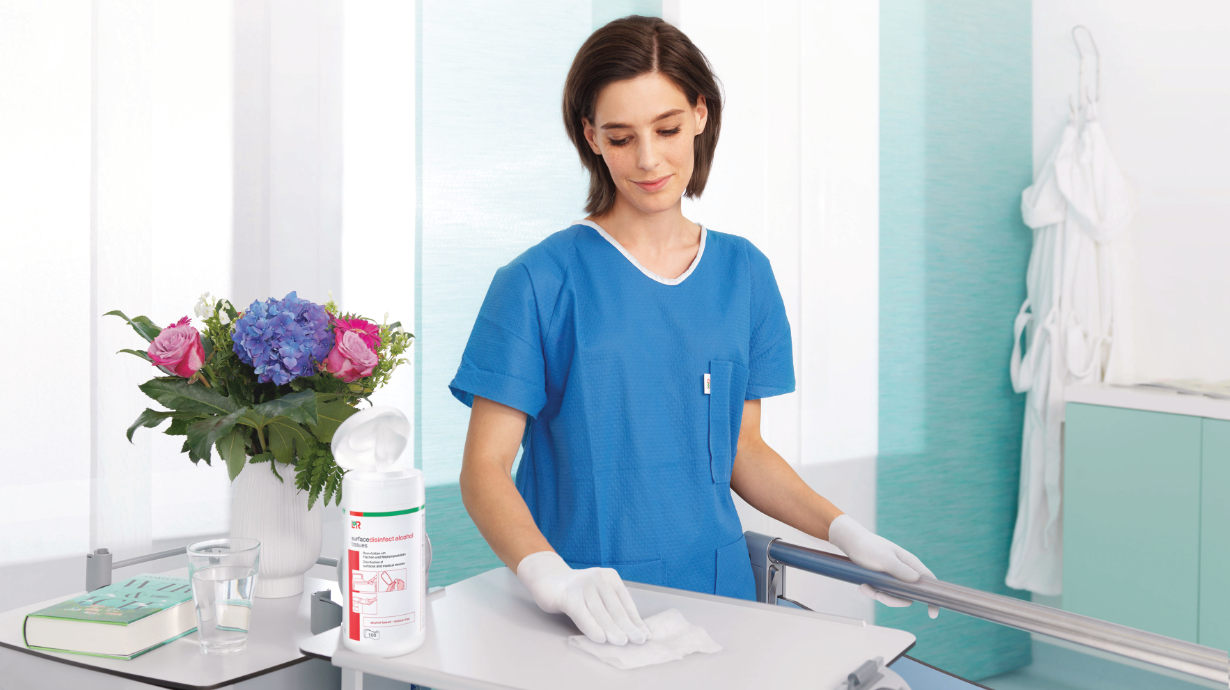
| Hygiene requirements for the cleaning and disinfection of surfaces |
Overview of disinfection measures |
Extent of disinfection in different areas |
|---|---|---|
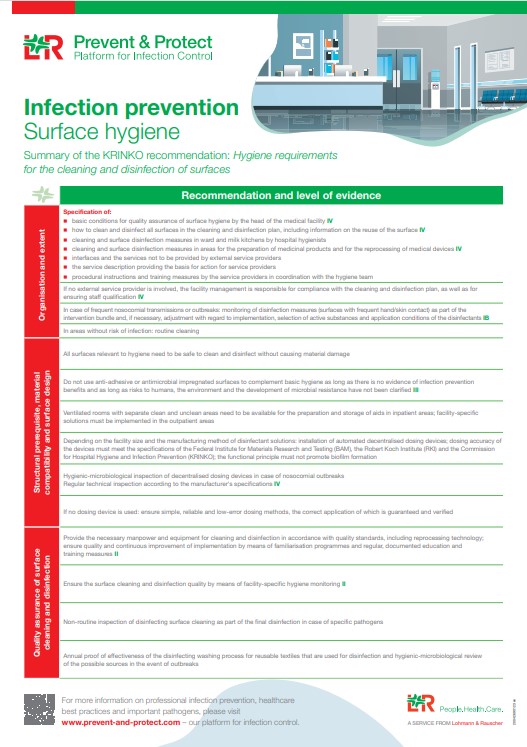 |
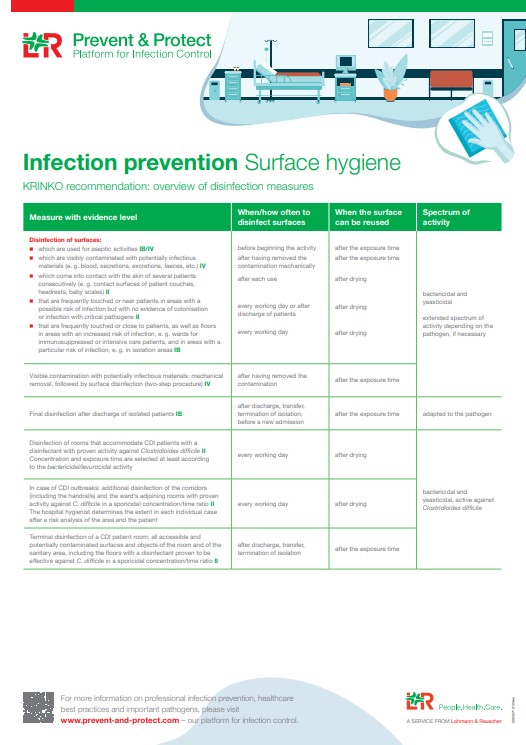 |
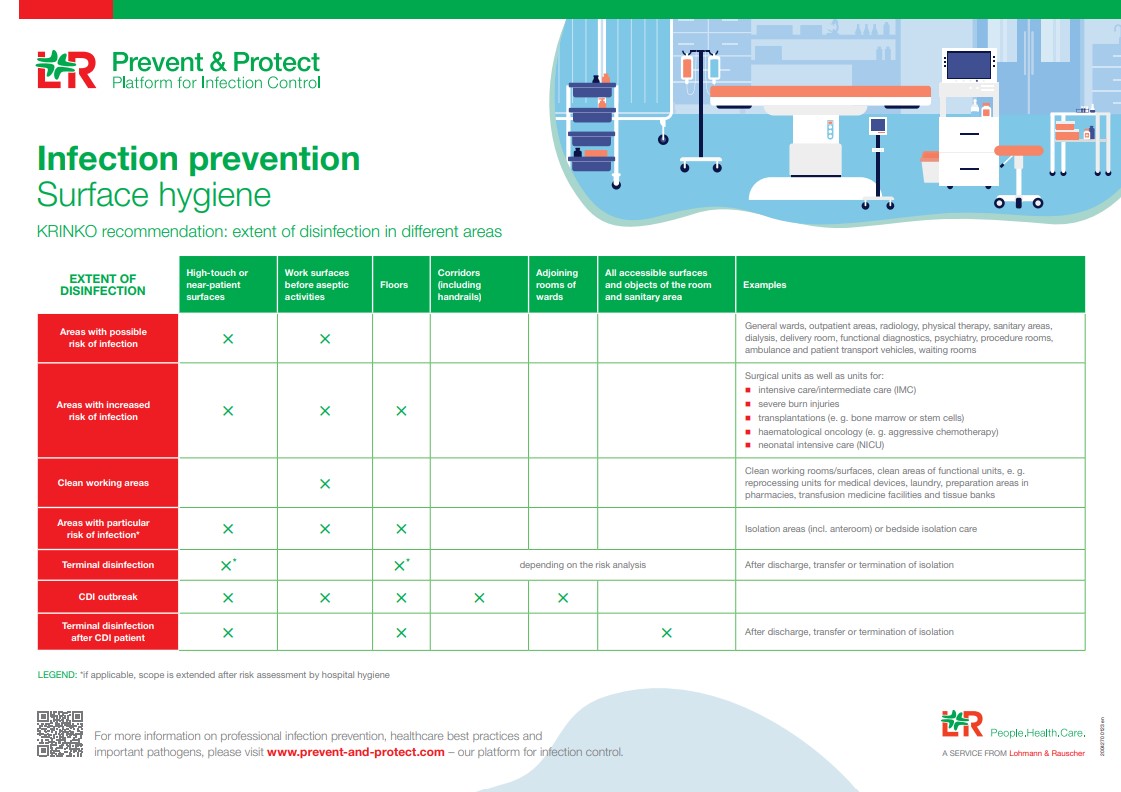 |
| Download – 2 MB | Download – 1.5 MB | Download – 1.5 MB |
In healthcare facilities, surface hygiene is an integral part of their prevention strategy to protect patients. This applies to both surface disinfection as part of basic hygiene — also termed non-targeted, routine or ongoing surface disinfection — and to what is known as targeted surface disinfection, i. e. for measures that require a special spectrum of activity , for surface disinfection after contamination with material potentially containing pathogens or for the terminal disinfection of areas after discharge, transfer or release from isolation.
Area and patient-specific risk analysis is decisive for determining the necessary measures, including cleaning activities. Understanding the pathogens‘ transmission routes is an important basis for this :

To interrupt the spread of critical pathogens and to generally prevent nosocomial infections (NI), the Commission for Hospital Hygiene and Infection Prevention (KRINKO) specifies five indications for surface disinfection:
Non-targeted surface disinfection is to be performed if there is no sign of specific pathogens being released, the elimination of which would require a surface disinfectant with an extended spectrum of activity. As a rule, it is performed in areas with a possible risk of infection (e. g. general wards, outpatient areas, functional diagnostics, patient transport vehicles) or with an increased risk of infection (e. g. operating theatre units, intensive care units, transplantation, severely burnt patients). For areas with a possible risk of infection, the recommendation is limited to the disinfection of high-touch or near-patient surfaces, whereas in areas with an increased risk of infection, the floors should also be disinfected. The surfaces can be used again after they have dried .
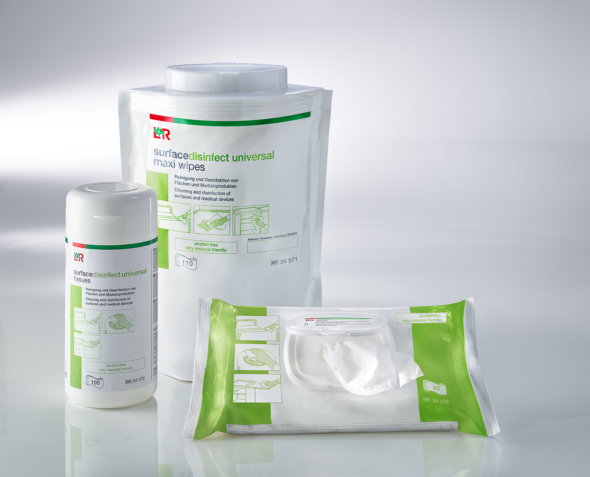
Advertisement
The L&R surfacedisinfect universal products stand out due to their excellent material compatibility. They are ready-to-use alcohol-free surface disinfection products for smaller surfaces. Click here for these and other L&R disinfection products.
Targeted surface disinfection is to be performed if a surface is contaminated with blood, secretions or excretions. KRINKO recommends a procedure in two steps: first, the contamination is removed mechanically and then, in a second step, the surface is disinfected. In this case, the exposure time of the disinfectant is to be observed. Hence, it is reasonable to use disinfectants with short exposure times if the surface needs to be used again quickly.
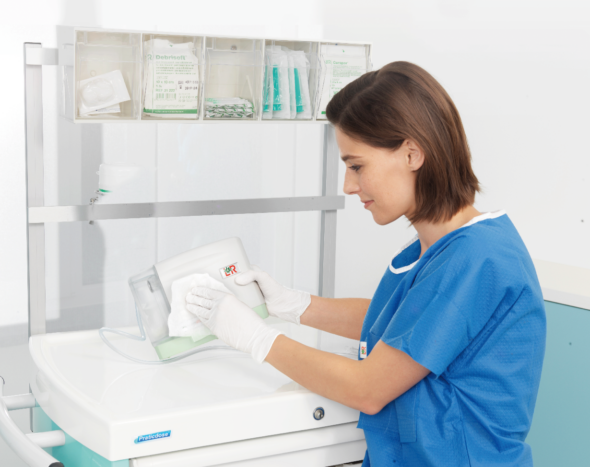
Surfaces used to prepare infusion solutions or to draw up syringes, as well as dressing trolleys, belong to the aseptic surfaces. Immediately before the activity, the surface disinfection is carried out and the activity may only begin after the disinfectant’s exposure time is completed. Products that act quickly are favourable here .
Isolated or cohort patients release pathogens the inactivation of which usually requires a specific spectrum of activity that goes beyond the basic requirement (bactericidal and yeasticidal ) — examples would be tuberculocidal, limited spectrum of virucidal activity or effective against Clostridioides difficile (C. diff). Once the isolation is terminated or the patient is discharged, a final disinfection adapted to the specific pathogen is carried out; here, the surface may only be used after the disinfectants’ exposure time. Frequently touched or near-patient surfaces and floors are disinfected.
If a room was occupied by a CDI patient (C. diff. contamination), the terminal disinfection extends to all accessible and potentially contaminated surfaces and objects of the room as well as the sanitary area.
In the event of an outbreak, targeted surface disinfection — if needed with a specific spectrum of activity — is indispensable for containing the transmission process. However, the product’s exposure time does not have to be observed before the surface is reused; in isolation areas, the surfaces to be disinfected include floors and near-patient/high-touch surfaces.
Things are different for an outbreak with Clostridioides difficile, which requires additional disinfection of corridors (including handrails) and adjacent rooms of the ward. Other measures are to be determined on a case-by-case basis by the hospital hygienist according to a unit and patient-specific risk analysis.
 |
| Practical tip
Observing the disinfectant’s exposure time For the following cases, the KRINKO recommends observing the exposure time specified by the manufacturer:
If surfaces need to be reused quickly, preferably use disinfectants with a short exposure time. |
Reusable and disposable textiles are often used on different surfaces. If reusable cloths and covers are used, the following applies: cloths and covers must not be re-immersed in the detergent or disinfectant solution. Disposable products prevent re-immersion but generate more waste. It has not yet been clarified to what extent the ecological balance of disposable wipe covers is more favourable than that of covers that are reusable. However, regarding error susceptibility (dosing, service life, adsorption of active substances, biofilm formation in wipe dispenser systems), ready-to-use disposable products are superior to reusable products or wipe dispensers with use solutions to be prepared, as certified ready-to-use products eliminate possible sources of error.
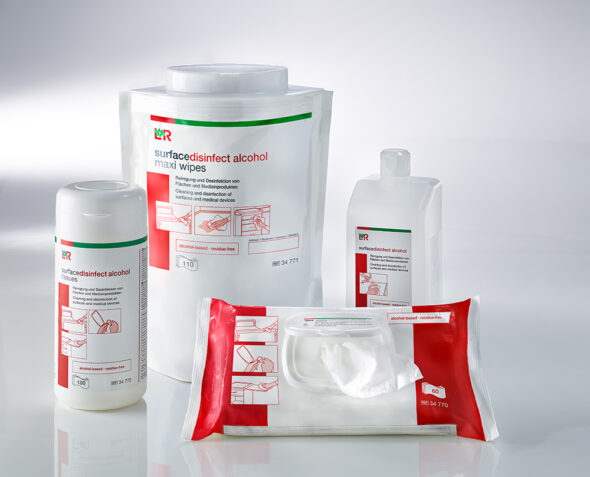
Advertisement
The L&R surfacedisinfect alcohol products are ready to use for surface disinfection. They are alcohol based and intended for smaller surfaces. Click here for these and other L&R disinfection products.
According to the KRINKO, appropriate staffing and equipment are the basis for a high quality of cleaning and disinfection. To ensure this quality, hygiene monitoring should be carried out at regular intervals. Familiarisation programmes as well as regular and documented education and training measures are additional indispensable cornerstones of professional hygiene in hospitals, medical practices, and other healthcare facilities.
To view the training video, click here: Wipe disinfection of small and medium-sized surfaces – the correct wiping technique and its verification
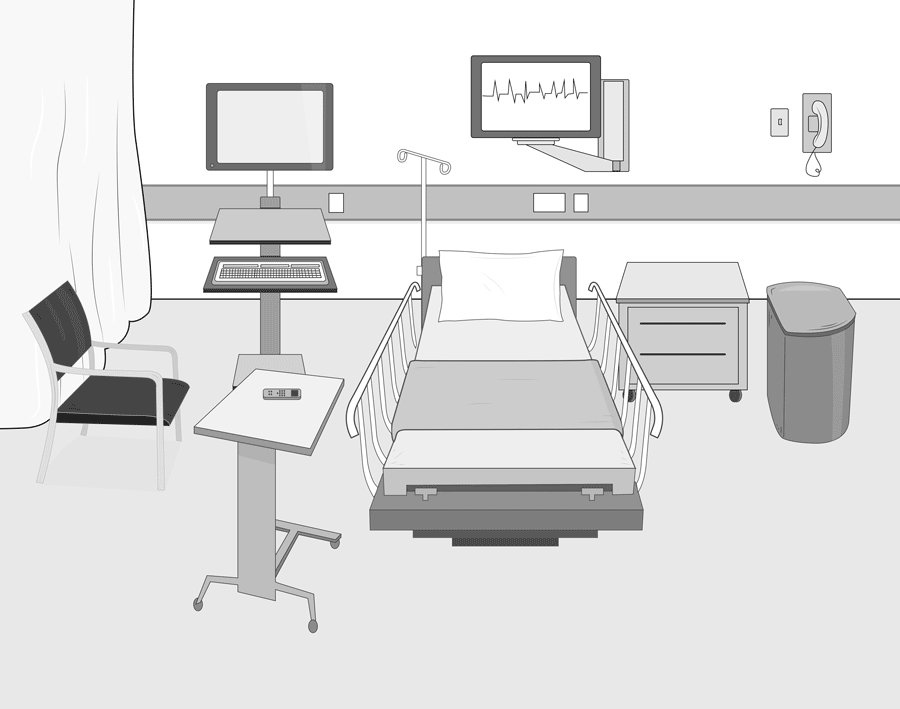
Based on: Back to Basics: Environmental Cleaning, Lisa Spruce and Amber Wood, AORN Journal
Glossary:
Produktl solutions:
1 Anforderungen an die Hygiene bei der Reinigung und Desinfektion von Flächen: Empfehlung der Kommission für Krankenhaushygiene und Infektionsprävention (KRINKO) beim Robert Koch-Institut. Bundesgesundheitsblatt Gesundheitsforschung Gesundheitsschutz. 2022 Oct;65(10):1074-1115